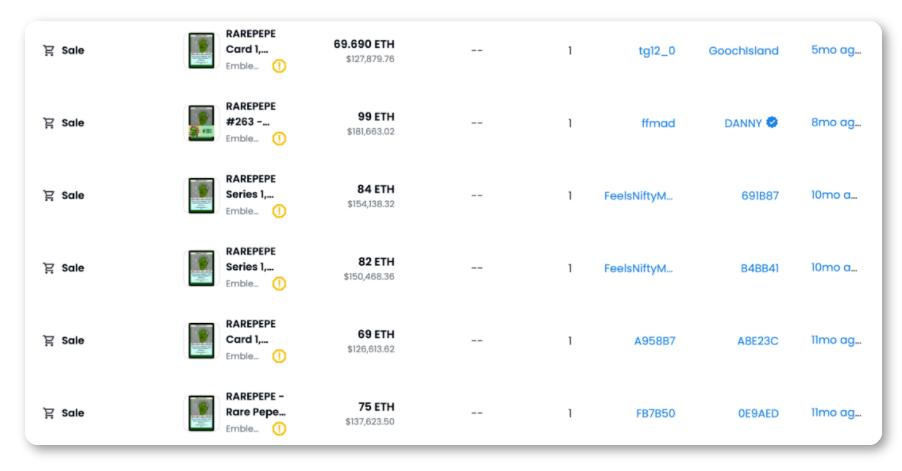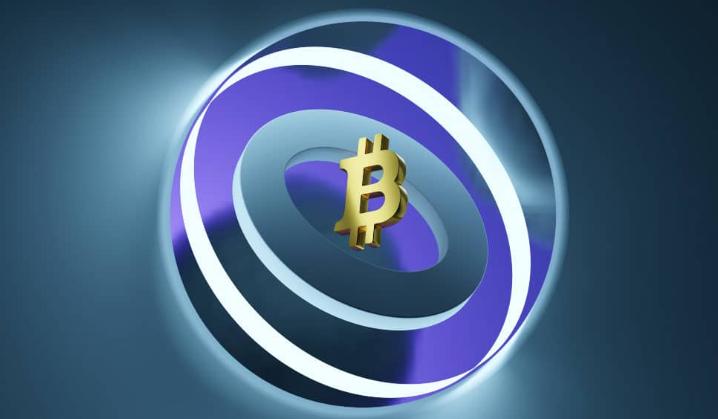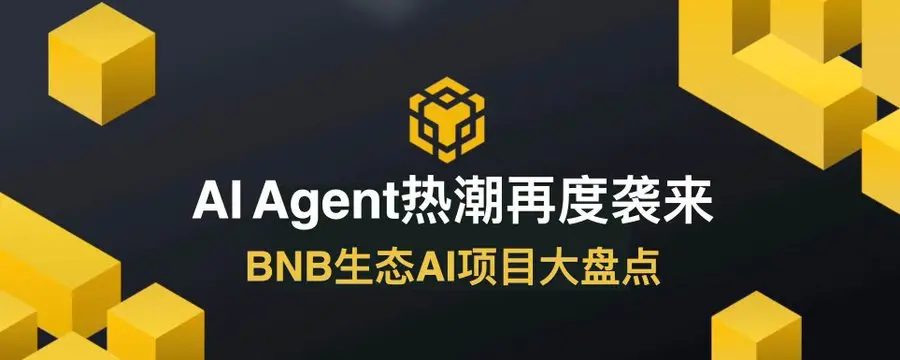Time Machine Journey: Searching for the Past of BRC-20
Author: Fishery Isla, Core Contributor of Biteye
Editor: Crush, Core Contributor of Biteye
*The full text is approximately 3000 words, with an estimated reading time of 7 minutes.
Since the release of the new theory of Ordinals in January, the Inscriptions (BTC NFT) and BRC-20 created based on this theory have received enthusiastic support from market funds, with early investors in BRC-20 reaping huge returns. A retrospective analysis reveals that the success of BRC-20 can be attributed to three main reasons:
- "New Technology": In the cryptocurrency and blockchain field, continuous innovation and development in technology have always been the focus of investors' attention.
(Note: The quotation marks are used here because BRC-20 is not the first token protocol on the BTC chain, which will be explained in detail later.)
- Good Narrative: From a market capitalization perspective, especially recently, BTC has been particularly strong, with its dominance in the overall market increasing, establishing itself as a dominant presence in the crypto market.
BRC-20 is closely linked to BTC; even without underlying value, as long as the story is appealing, BRC-20's narrative as a permissionless token in the BTC ecosystem has already won over most altcoins from the starting line.
- Carefully Designed Issuance Method: According to the Ordinals theory, BRC-20 can technically mint without limiting the maximum quantity per mint, meaning that the token issuer only needs one transaction to mint the total supply and then distribute it in various ways (such as an ICO model).
The advantage of this ideal method lies in its convenience and efficiency in saving BTC performance, whereas the currently praised batch minting method significantly increases network load and incurs high fees, but its process is very similar to Ethereum NFT issuance, which is a mature method suitable for speculation.
This includes operations such as card listing, gas pulling, and floor sweeping, each of which can greatly stimulate market sentiment. Additionally, BRC-20 uses the ERC-20 name but inherits the gameplay and trading strategies of ERC-721 (NFT), making it particularly suitable for speculators with NFT trading experience.
These factors combined have led to the extremely high popularity of BRC-20, making it difficult for most risk-averse investors to enter the market, leaving them to lament their missed opportunities.
Looking back, it is indeed a pity to have missed BRC-20 earlier, but there is no need for regret. The author has discovered a public chain-level project called Counterparty that was released nine years ago.
This project is similar to Ordinals, also supporting the issuance of NFTs, tokens, and other assets on the BTC main chain, and is more decentralized, supporting decentralized transactions, transfers, splits, and other operations.
01 Counterparty Protocol

Counterparty is a messaging protocol launched in 2014 based on the BTC mainnet, primarily used for issuing and indexing custom digital assets (NFTs) on the BTC mainnet, which can be understood as a data layer L2 on the BTC network.
It features an order book-style decentralized exchange (DEX) and a token (XCP), allowing users to mint and trade digital assets. Its token XCP was launched in 2014, utilizing a Proof-of-Burn (PoB) token launch model.
Early BTC users sent BTC to a burn address to exchange for XCP tokens at a ratio of 1:1000-1:1500 (all tears).
From the "zeroing" trend of XCP, a glimmer of hope can be seen. After entering the era of smart contracts, Counterparty remained dormant for a long time until the market discovered an astonishing fact—there are many digital artworks relying on the XCP protocol that were issued on Bitcoin, predating NFTs on Ethereum by a long time.
The most famous of these is the Rare PEPE series of digital cards issued in 2016. Currently, Rare Pepe and other BTC NFTs (including Ordinals) can be traded across chains to Ethereum and other EVM chains' Opensea through Emblem Vault.
Below is a brief technical explanation to help everyone understand the difference between digital assets issued by Counterparty on BTC and the currently popular Ordinals.
The Counterparty protocol uses Bitcoin's native instruction OPReturn and multi-signature transactions to store transaction data in the outputs of UTXOs. The OPReturn function allows users to store a small amount of additional information (such as comments, messages, or reference numbers) with data up to 80 bytes.
However, if the file exceeds 80 bytes, the protocol uses ⅔ multi-signature to store data across multiple outputs.
It is important to note that due to considerations of main chain costs and image quality (not a technical issue), the vast majority of Counterparty image-based assets do not store all image data on-chain like Inscriptions.
The solution, like most Ethereum NFTs, is to host images on third-party storage services, with the Counterparty client running on Bitcoin nodes responsible for interpreting this blockchain data and indexing the images contained in the assets.
In contrast, Ordinals achieved low-cost on-chain storage of all data through the recent SegWit upgrade on BTC.
Ordinals relies on a brute-force method to achieve decentralized storage. However, when discussing the overall decentralization of the protocol, Ordinals is far inferior to Counterparty: Ordinals' BRC-20 merely uploads transaction plaintext at a high cost to the BTC mainnet, utilizing BTC's storage layer, while its execution and consensus layers still rely on third-party centralized services.
We can imagine a normal blockchain as a combination of a ledger + an accountant; the blockchain storage layer serves as the ledger, while the blockchain execution layer, i.e., the accountant, is responsible for verifying the balances of accounts, NFTs, and tokens.
For Ordinals assets, there is only the ledger, lacking a decentralized accountant to verify balances, requiring various third-party exchanges and wallet projects to index and verify account balances during transactions, making it difficult to ensure that double spending and malicious actions by project parties do not occur.
02 Rare Pepe
Many NFT players may have heard that before the concept of ETH NFTs emerged, some "ancient" blockchains had already launched digital assets, with the Rare Pepe card series being a typical OG representative of such ancient digital assets, issued on the BTC main chain and Counterparty.

Rare Pepe is a variant of the "Pepe the Frog" internet meme, based on the character created by Matt Furie.
Rare Pepe was created by artists from around the world between 2016 and 2018, based on the aforementioned meme, and traded on the CounterParty platform in the form of non-fungible tokens (NFTs, a concept that did not exist at the time).
The project released a total of 1,774 official cards across 36 series, with the classic OG series Nakamoto Card Pepe having a total issuance of 298.

Additionally, due to the poor performance of the XCP token price, some community members have adopted the digital asset Pepecash (Pepe Cash) as the benchmark currency of the XCP ecosystem.

In September 2016, the first Rare Pepes were mined in Bitcoin block 428919, predating popular Ethereum-based NFTs.
Shortly thereafter, a dedicated Telegram chat group was created to discuss Counterparty NFTs. On January 13, 2018, a live auction of Rare Pepes was held in New York City, including a Rare Pepe based on Homer Simpson that sold for $38,500, observed by representatives from the Metropolitan Museum of Art, the Museum of Modern Art, and Sotheby's Institute of Art.
Three years later, the buyer sold it for $312,000.
 (Transaction record of Rare Pepe cross-chain to ETH Opensea via Emblem Vault)
(Transaction record of Rare Pepe cross-chain to ETH Opensea via Emblem Vault)
03 Bitcoin "Stamps" and SRC-20
Inspired by Ordinals Inscriptions and BRC-20, the Counterparty community launched BTC Stamp and SRC-20, which are similar to ERC-1155 semi-fungible tokens or digital collectibles.
However, they are directly stored on Bitcoin's unspent transaction outputs (UTXO), with these records stored directly within BTC transfer data—not stored in witness data like Ordinals. Because of this, the gas costs for Minting Stamp/SRC-20 are much higher than Inscriptions, so they have not yet formed a market effect like Ordinals.
Further performance will need to be observed regarding the Counterparty ecosystem's support for stamps and SRC-20. If supported, SRC-20 will directly gain compatibility with a series of Counterparty infrastructures, offering a higher degree of decentralization compared to BRC-20, which requires centralized indexing.
04 Conclusion
Inscriptions, BRC-20, tokens, and NFTs on the Bitcoin network are not innovative from the perspective of blockchain development history, but for the majority of users who entered the market after 2018, they indeed feel like something new.
As summarized at the beginning of the article, the three key factors for success are innovation, narrative, and gameplay. Ordinals did the right thing at the right time.
That said, the price of investment products ultimately needs to return to value. Will the prices of similar old projects align with Ordinals? Or will Ordinals follow in the footsteps of older products?
Or, as the old saying goes, "speculate on the new, not the old," will Ordinals continue to maintain an independent market? This remains to be seen.
References
[1] A New Era for Bitcoin?
https://research.binance.com/en/analysis/a-new-era-for-bitcoi
[2] What Is Counterparty? Historical NFTs Built on Bitcoin
https://decrypt.co/resources/learn-counterparty-historical-nfts-built-bitcoin
[3] Why Proof-of-Burn
https://counterparty.io/news/why-proof-of-burn/
[4] Beyond Ordinals: A Guide to Bitcoin's Peer-To-Peer Ecosystem
https://nftnow.com/features/beyond-ordinals-discover-the-rich-tapestry-of-the-bitcoin-ecosystem/










